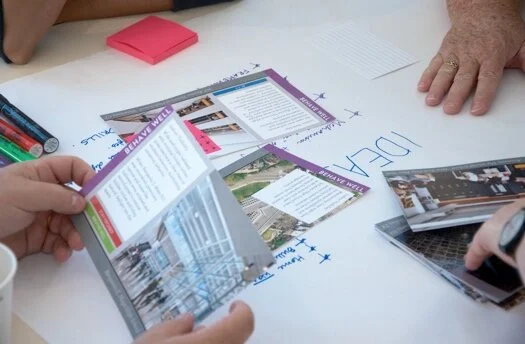High Performance Schools & Hospitals
Developing design guidelines for high performance schools and hospitals, including feedback from the field
Research on Schools
The distinctions between architecture, industrial design, and manufacturing are beginning to fade, leading to opportunities to create innovative integrated systems that meet emerging sustainability, technological, and organizational challenges. Prefabrication and modular buildings are emerging worldwide to address the growing challenges of worker migration, natural disasters, and shortages of construction labor. At the same time, the design of products and product assemblies that can be pre-engineered and rapidly assembled and disassembled offers opportunities for superior aesthetic detailing and performance. Moreover, the design of integrated systems can contribute to enhanced sustainability through material, energy and water conservation, enhanced environmental quality, and even energy generation.
In this effort, faculty and students continue to identify, design, develop and mock-up robust, integrated solutions for modular classroom designs that reflect educational and environmental innovation. Based on precedent studies, the team is developing performance specifications and design variations for components and integrated assemblies in three climates: temperate, hot-humid, and hot-dry. Collaboration for High Performance Schools (CHPS) and LEED for Schools provide a baseline, along with international standards for sustainable schools, towards developing an integrated kit-of-parts with specifications, visualizations, and mock-ups.
Research on Hospitals
The Center for Building Performance and Diagnostics (CBPD) has undertaken several projects to develop guidelines and lifecycle justifications for the design and engineering of new and retrofit hospitals as well as for the maintenance of existing healthcare facilities. A major publication on lifecycle Justifications of High Performance, Environmentally-Responsive, Green Hospitals identifies case studies linking the quality of hospital facilities to health or performance outcomes from recovery rates to medication errors. In addition to identifying existing field and laboratory studies, the project continues to establish the baseline energy and economic variables, and the lifecycle return on investment possible through innovative systems and systems integration in healthcare facilities.
Developing guidelines to promote student well being in schools, by Annie Ranttila (expected PhD-BPD 2020)
Publications and Reports
Vivian Loftness, Khee Poh Lam, Yun Gu, Megan Snyder (2005) Greening the Operation and Maintenance of the Children’s Hospital of Pittsburgh: Benchmarks and opportunities for innovation of material and utility flows. Collaboratively with the Children’s Hospital of Pittsburgh, Sponsored by The Heinz Endowments
PhD Theses
Cochran, Erica (2014) Sustainable Schools and Neighborhoods: The Impact Of School Building Physical Characteristics And Neighborhood Attributes On Student Performance And Health (Vivian Loftness • Khee Poh Lam • Kristen Kurland• Cliff Davidson, Civil Engineering, Syracuse)
Rantilla, Annie (expected PhD-BPD, 2020) Safe and Healthy Schools – Synergistic Design Actions to Improve School Buildings for the Whole Child (Vivian Loftness • Erica Cochran Hameen • Sharon Carver)
Developing guidelines for positive outcomes in the health and safety categories of Be Fit, Breathe Well, Be There, Stay Focused, Behave Well, Be Happy, and Be Safe. By Annie Ranttila (expected PhD-BPD 2020)
Example PhD Thesis
Rantilla, Annie (expected PhD-BPD, 2020) Safe and Healthy Schools – Synergistic Design Actions to Improve School Buildings for the Whole Child (Vivian Loftness • Erica Cochran Hameen • Sharon Carver)
55 million kindergarten through twelfth grade students attend school in the United States. Each day, they face common risks like bullying, asthma, attention deficient hyperactivity disorder, and obesity. Resources and guidelines that currently exist often utilize a singular focus without identifying multi-focal strategies for educators that are directly responsible for student well-being.
This dissertation proposes that through the understanding of relative risks and their linkages to the built environment, integrated design and retrofit actions can be developed to address the health and safety of every child in school buildings.
This work is demonstrated through a series of sub-hypotheses:
The risks of bullying (by both the bully and the bullied), obesity, ADHD, asthma, absenteeism, and school violence are known individually but not addressed side by side in the context of the built school environment.
The role of the school environment in student health and safety and individual building investment decisions can be quantified or qualified and can be correlated.
Individual building investment decisions need visual and physical examples to influence decision-makers.
Integrated design and retrofit actions can be proposed that can influence decision-makers to reprioritize their perceived risks. Proposed actions can address positive outcomes in the health and safety categories of Be Fit, Breathe Well, Be There, Stay Focused, Behave Well, Be Happy, and Be Safe.
Influence decision-makers to reprioritize their perceived risks. By Annie Ranttila (expected BPD 2020)





